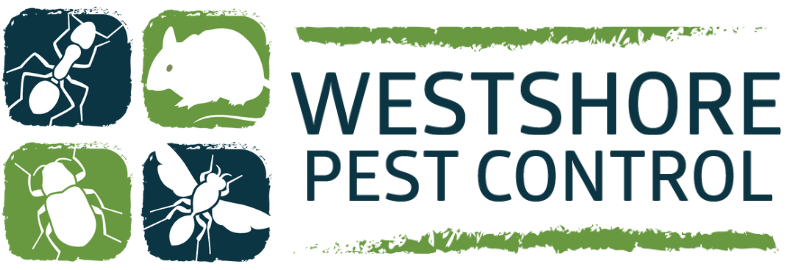Why Proper Ventilation Is Key To Pest Control
Airflow and ventilation form the cornerstone of a safe, comfortable, and healthy living environment. Proper ventilation regulates temperature, improves air quality, and minimizes dampness—all crucial for maintaining a home’s structural integrity and habitability. However, ventilation is also a critical, and often overlooked, factor in deterring unwanted invaders. Poor airflow doesn’t just trap stale air; it creates conditions that encourage unwanted infestations. From damp crawl spaces to humid bathrooms, insufficient ventilation turns unassuming corners of a home into hotspots for potential problems.
Unwanted intrusions aren’t limited to dark basements or cluttered attics. Moist, stagnant air invites unwelcome visitors into areas that homeowners might otherwise consider secure. Understanding how ventilation affects the likelihood of intrusions can help homeowners safeguard their living spaces. By ensuring that airflow remains consistent and humidity levels are controlled, homeowners can create an inhospitable environment for would-be infiltrators and simultaneously enhance their home’s overall health.
How Poor Ventilation Creates Moisture Problems
Moisture is one of the most powerful attractants for unwanted visitors. Poor ventilation contributes significantly to excessive dampness, especially in spaces like basements, crawl spaces, and bathrooms. High humidity levels in these areas lead to condensation on walls, floors, and ceilings, creating an ideal environment for mold and mildew. This dampness often supports the lifecycle of various intruders, as moist wood, paper, and other organic materials provide perfect nesting grounds.
Mold growth presents a dual problem: it compromises air quality and attracts opportunistic invaders that feed on decaying organic matter. Once mold takes root, other hazards may follow, including fungi-loving intruders that thrive in damp, unventilated spaces. These pests aren’t just nuisances; they often quietly damage the home’s structural elements by feeding on wooden beams and drywall, further exacerbating existing moisture problems.
Effective ventilation is the first line of defense against these risks. Dehumidifiers and exhaust fans are excellent tools for addressing moisture accumulation. Kitchens and bathrooms, where moisture levels tend to spike, benefit from exhaust systems that carry damp air outside before it becomes an issue. Crawl spaces, often ignored by homeowners, can be safeguarded with proper ventilation to reduce humidity, keeping wood dry and uninviting to any hidden threats.
The Dangers Of Stagnant Air
Stagnant air is another consequence of poor ventilation, and it creates ideal conditions for various hidden nuisances to thrive. Spaces like attics, basements, and behind large furniture often have limited airflow, creating dark, undisturbed areas where invaders can multiply undetected. Whether it’s spiders weaving intricate webs in an attic or rodents nesting in the untouched corners of a basement, stagnant air allows these creatures to remain unnoticed until their numbers grow.
A lack of ventilation does more than provide hiding places; it intensifies odors that attract further problems. Food particles, waste, and moisture all contribute to a cocktail of scents that signal safety and resources. Rodents, for example, are adept at navigating toward these odors, bringing additional hazards like gnawed wires and insulation damage.
Proper airflow disrupts these conditions, making it harder for intruders to establish themselves. Ventilated storage spaces and attics are far less appealing, as airflow removes the stagnant air needed to harbor infestations. Coupled with sealing entry points and regular cleaning, improved ventilation helps transform these areas into less hospitable environments for unwanted visitors.
Ventilation’s Role In Preventing Infestations
Proper ventilation not only deters unwanted intrusions but also plays a pivotal role in amplifying the success of any remedial actions taken. Without adequate airflow, treatments designed to address infestations can be less effective, as they may fail to penetrate all the hidden crevices where problems often take root. Poorly ventilated areas allow odors, pheromones, and even residue from treatments to linger, creating an environment that continues to attract new threats. This perpetuates the cycle of infestation, turning a localized issue into an ongoing challenge that requires repeated interventions.
Attics, crawl spaces, and basements are particularly vulnerable to these complications. In attics, trapped heat and moisture create an inviting climate for rodents and insects, where they can thrive out of sight. Crawl spaces with limited airflow often become damp, fostering conditions ideal for termites, mold, and mildew. Basements, when poorly ventilated, serve as long-term shelters where infestations can expand unchecked. These challenges are compounded by the fact that such spaces are inherently harder to inspect, clean, and treat effectively.
By prioritizing ventilation, homeowners address these vulnerabilities head-on, creating an environment that supports thorough and lasting treatments. Proper airflow disperses treatment materials more evenly, reaching areas that would otherwise remain untouched. Furthermore, ventilation reduces the buildup of odors and other attractants, ensuring that once intrusions are addressed, they are far less likely to recur. In this way, effective ventilation becomes a cornerstone of both prevention and remediation, safeguarding the home for the long term.
Comprehensive Solutions Through Ventilation
Proper airflow is a cornerstone of any strategy to maintain a healthy, comfortable home. By reducing dampness and increasing circulation, ventilation addresses the conditions that attract unwanted visitors, such as termites or rodents. Crawl spaces and attics benefit greatly from regulated airflow, as dry environments deter most types of intrusions. Bathrooms and kitchens equipped with modern exhaust systems can prevent moisture accumulation, cutting off essential resources for many unwanted invaders.
Moreover, ventilation works synergistically with other home maintenance practices. Sealing cracks, maintaining clean spaces, and scheduling professional inspections amplify the effects of proper airflow. When all these measures are integrated, the home becomes an unappealing target for infestations.
At Westshore Pest Control, we specialize in creating tailored solutions that address the unique vulnerabilities of every home. Ventilation plays a key role in our comprehensive prevention plans, ensuring long-term safety and comfort. From professional inspections to structural advice, our team is dedicated to keeping your living space secure and free from unwelcome surprises.
At Westshore Pest Control, we understand that a truly healthy home starts with addressing its foundational elements. Poor ventilation often creates hidden vulnerabilities, allowing issues to develop undetected over time. But it doesn’t have to be this way. Our team specializes in identifying and resolving these often-overlooked risks, combining modern technology with time-tested strategies to safeguard your home. By improving airflow and addressing structural factors, we eliminate the underlying conditions that attract unwanted intrusions and compromise your comfort.
Whether it’s an attic requiring better air circulation, a crawl space assessment to identify dampness, or a full-scale home inspection to uncover hidden risks, our professionals leave no stone unturned. Proper ventilation isn’t just a matter of comfort or convenience; it’s an investment in your home’s longevity and your family’s well-being. Contact Westshore Pest Control today to schedule an assessment. Together, we’ll ensure your home is a secure, comfortable space, free from the hidden challenges that poor ventilation can bring. Let us help you protect your sanctuary and enjoy peace of mind year-round.

